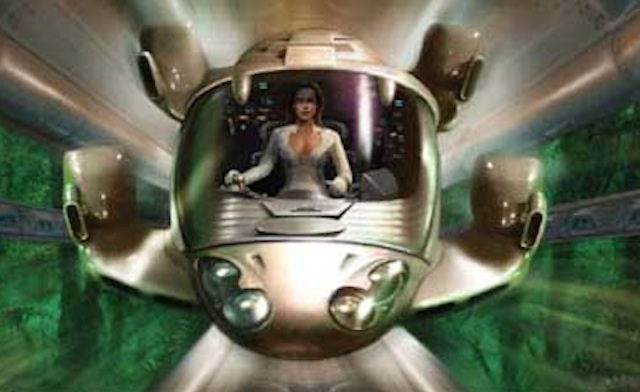Historical fiction, with cyborgs

As a historian, I’m a sucker for time travel novels. To go back in time and observe is a historian’s dream. (We’ll never know, though, even if we were there, exactly what people were thinking and feeling at any given time in history. People are unfathomable. Some things will always be guesses.) In some time travel novels the travelers are scientists, historians, hunters, tourists, or everyday people sucked back in time by a portal. But in my favorite time travel novels, the travelers are immortals.
Kage Baker’s Company books are some of the best time travel novels ever written, using the genre to talk about memory, time, history, change, and the limits of infinity. Baker, who died too young in 2010, wrote 8 novels and 2 short story collections about immortal time travelers and their shadowy employer, Dr. Zeus Inc. also known simply as “The Company.” It’s best to start at the beginning, with In the Garden of Iden (1997).
The backstory is that time travel and immortality were invented contemporaneously, in the 24th Century. But there are caveats. Time travel is dangerous to normal humans, who can only go into the past and then return to the present, and cannot take anything back from the past with them. And the immortality process only works on children. The Company, then, for money as well as for unspecified nefarious purposes, goes back as far as possible in time and rescues children, starting with Neanderthal children, who would otherwise have died, using nanotechnology to turn them into immortal cyborg operatives. The operatives work through the millenia in real time, with retirement and rewards promised once they reach the 24th century.
The heroine of most of the books, the Botanist Mendoza, was rescued from a Spanish Inquisition dungeon and drafted into the Company. Her first mission, in In the Garden of Iden, is to take genetic samples from plants in an 16th century English nobleman’s garden. The teenage Mendoza dislikes the mission (indeed, all cyborgs are raised to hate the past from the perspective of their prudish 24th century employers.) But as she learns to do her work she also learns that there is much she hasn’t been told about humans and human life in history. The book is a great Elizabethan historical novel whose main characters happen to be immortal cyborgs. Of course, Mendoza falls tragically in love. But why do people identical to her lover show up in the future in the other novels?
The work of the Company is to save cultural materials that would otherwise have been destroyed, such as the Library of Alexandria, or various extinct botanical species, to sell in the 24th century. Operatives also save important papers in a long scene set during the 1906 San Francisco earthquake. This is actually a common trope of time travel books. The idea that objects destroyed in their own time can be moved to the future without upsetting the continuum is a saving revelation in, for instance, Connie Willis’ time travel books. In Baker’s books, it’s a commercial proposition. Company operatives hide items in Company caches to last out the millenia till they can be found in the present and sold.
Baker was a Californian and an enthusiast of California history, and it shows. Mendoza is sent to 16th century and 19th century California as well as to a 150,0000 BCE Catalina Island. In Mendoza in Hollywood (2000) the bored cyborgs watch Intolerance. (Luckily an operative who had been in Babylon is there to point out inaccuracies.)
Company operatives from the far past know all about the future — up to a particular date in 2355 known as the Silence, when all information stops. What happens then? You’ll have to read the books. (Hint: the last book is called The Sons of Heaven.)
—
Suzanne Fischer is a historian and writer who lives in Detroit. She cares about people, places, and things. Find her on Twitter as @publichistorian